Electrostimulation Technology Helps Manage Post-Operative Edema
|
By HospiMedica International staff writers Posted on 04 Feb 2020 |
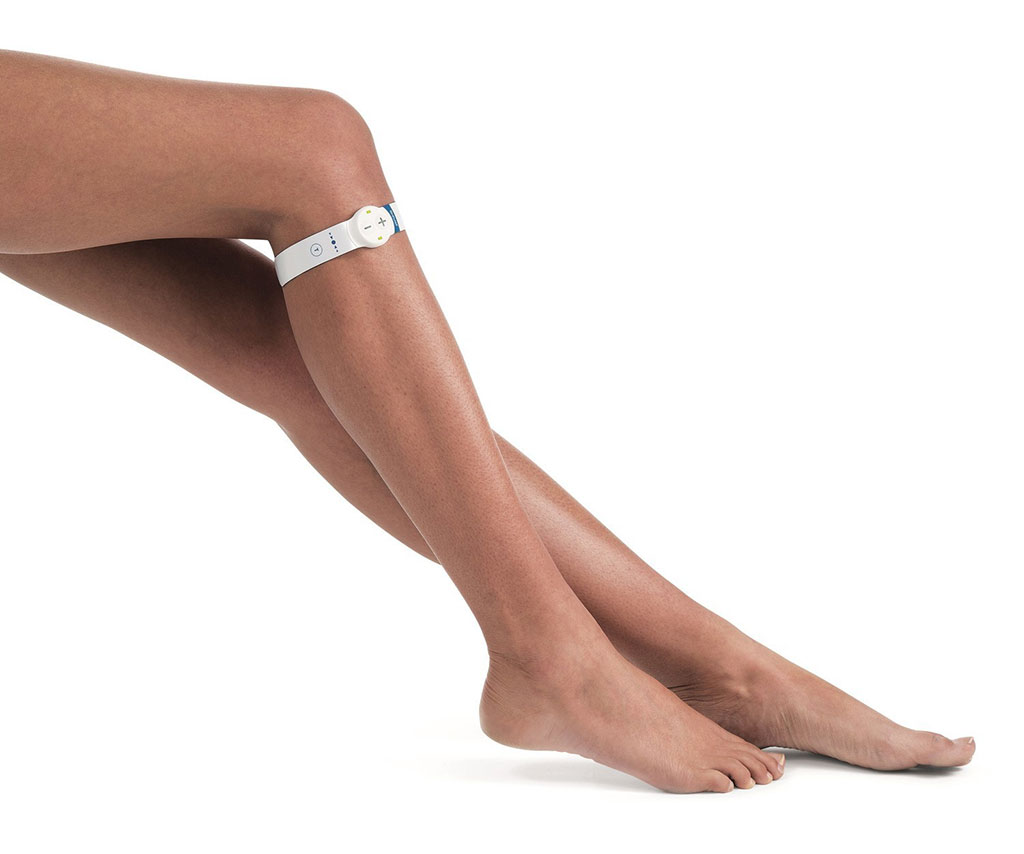
Image: The geko disposable muscle contraction device (Photo courtesy of Sky Medical)
A wearable neuromuscular electrostimulation device increases blood flow in the deep veins of the calf, reducing edema following orthopedic surgery.
The Sky Medical Technology (High Wycombe, United Kingdom) geko device is a daily disposable wristwatch sized device worn at the knee designed to gently stimulate the common peroneal nerve in order to activate the calf and foot muscle pumps. The resulting contraction of the calf muscles boosts circulation from the lower limbs to the heart, in turn increasing venous return and local blood circulation, and at the same time helping to reducing venous thromboembolism (VTE) risk in both surgical and medical patients.
Once switched on and after the appropriate stimulation level has been selected, the patient becomes aware of the muscle contraction, which recedes slightly after a few minutes, thanks to accommodation. During the treatment period, the patient’s awareness of muscle contraction lessens, allowing them to carry out their normal daily routine, including sleep. The geko device needs to be removed if the patient wants to shower or bathe.
“Our bioelectronic medicine therapy, OnPulse, embedded in the geko device, completely redefines the way vascular related conditions are treated,” said Bernard Ross, CEO of Sky Medical Technology. “Through our innovative mechanism of neuromuscular electrostimulation, we are the first clinically proven bioelectronic compression technology to prevent and treat a wide range of acute and chronic circulatory conditions. New care pathways are in development in neurology, orthopedics, renal, and peripheral vascular disease.”
By stimulating the common peroneal nerve proximal to the posterior/anterior bifurcation, the common fibular nerve, the external popliteal nerve, and the lateral popliteal nerve are innervated, simultaneously activating the tibialis, peroneus longus, and lateral gastrocnemius muscles. Together, their simultaneous contraction compresses the venous system, efficiently evacuating blood in the deep veins of the calf, at a rate equal to 60% of walking, but with no change to heart rate or blood pressure.
Related Links:
Sky Medical Technology
The Sky Medical Technology (High Wycombe, United Kingdom) geko device is a daily disposable wristwatch sized device worn at the knee designed to gently stimulate the common peroneal nerve in order to activate the calf and foot muscle pumps. The resulting contraction of the calf muscles boosts circulation from the lower limbs to the heart, in turn increasing venous return and local blood circulation, and at the same time helping to reducing venous thromboembolism (VTE) risk in both surgical and medical patients.
Once switched on and after the appropriate stimulation level has been selected, the patient becomes aware of the muscle contraction, which recedes slightly after a few minutes, thanks to accommodation. During the treatment period, the patient’s awareness of muscle contraction lessens, allowing them to carry out their normal daily routine, including sleep. The geko device needs to be removed if the patient wants to shower or bathe.
“Our bioelectronic medicine therapy, OnPulse, embedded in the geko device, completely redefines the way vascular related conditions are treated,” said Bernard Ross, CEO of Sky Medical Technology. “Through our innovative mechanism of neuromuscular electrostimulation, we are the first clinically proven bioelectronic compression technology to prevent and treat a wide range of acute and chronic circulatory conditions. New care pathways are in development in neurology, orthopedics, renal, and peripheral vascular disease.”
By stimulating the common peroneal nerve proximal to the posterior/anterior bifurcation, the common fibular nerve, the external popliteal nerve, and the lateral popliteal nerve are innervated, simultaneously activating the tibialis, peroneus longus, and lateral gastrocnemius muscles. Together, their simultaneous contraction compresses the venous system, efficiently evacuating blood in the deep veins of the calf, at a rate equal to 60% of walking, but with no change to heart rate or blood pressure.
Related Links:
Sky Medical Technology
Latest Critical Care News
- First-Ever Medical Technology Regrows Nerves and Stops Amputations in Diabetic Patients
- AI Tool Reduces Serious Complications and Readmissions After Colorectal Cancer Surgery
- Time-Released Gel Eliminates Residual Brain Tumor Cells Post Resection
- Handheld Sensor Could Replace Blood Tests for Health Monitoring
- 3D-Printed Carbon Nanotube Sensors to Enable Smart Health Monitoring
- Wearable ‘Microscope in a Bandage’ Fastens Wound Healing
- Virus Cocktail to Combat Superbugs Offers New Precision Medicine Approach for Hospitals Battling AMR
- Smart Biosensors Could Be Game-Changer for Wearable Health Tech
- Brainwave Test Detects Memory Decline Years Before Alzheimer’s Diagnosis
- Low-Cost Medical Device Stops Postpartum Hemorrhages
- Non-Invasive Wearable Sensor Detects Sweat Biomarker in Low-Perspiration Conditions
- New Autoinjector Could Transform Trauma Care in Severe Bleeding Emergencies
- Portable Light-Based Brain Monitor Improves Dementia Diagnosis
- New Ultrasound Technique Enables Safer Vein Access in Critically Ill Patient
- CVD Risk Prediction Tool Could Guide Statin Therapy
- Wearables Could Revolutionize Pregnancy Monitoring and Detect Abnormalities
Channels
Surgical Techniques
view channel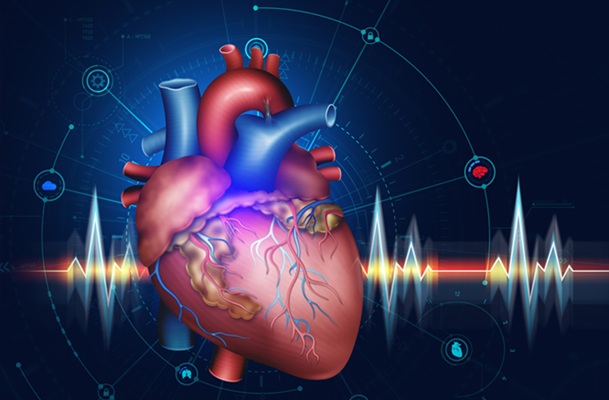
World's First Transcatheter Smart Implant Monitors and Treats Congestion in Heart Failure
Heart failure is one of the leading causes of hospitalization worldwide, with millions of patients requiring ongoing treatment to manage congestion. Current therapies often involve tracking remotely measured... Read more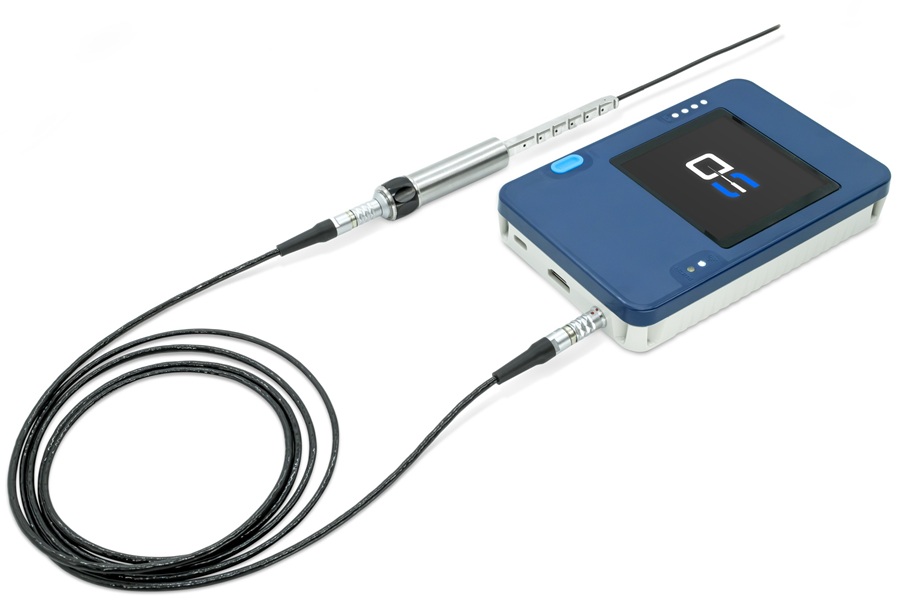
Hybrid Endoscope Marks Breakthrough in Surgical Visualization
For more than three decades, surgical endoscopy has depended on either rigid or flexible scopes, each with major drawbacks. Rigid scopes offer precision but limit maneuverability, while flexible scopes... Read more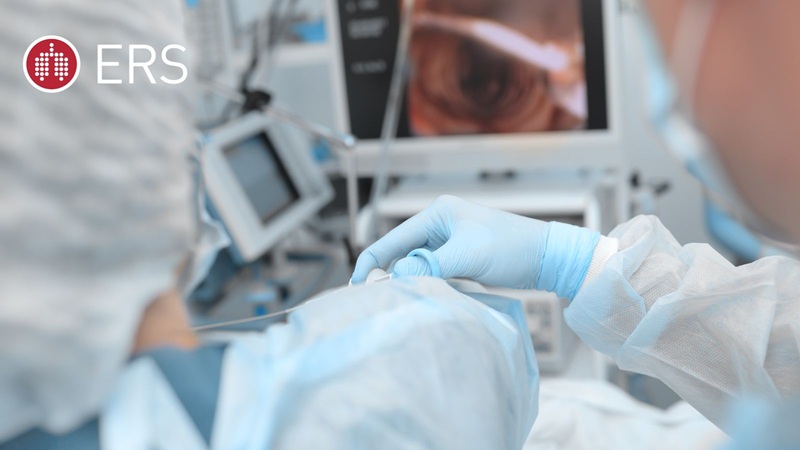
Robot-Assisted Bronchoscope Diagnoses Tiniest and Hardest to Reach Lung Tumors
Lung cancer is one of the deadliest cancers in Europe, killing around a quarter of a million people annually. Survival rates are much higher when tumors are diagnosed at an early stage, but the tiniest... Read more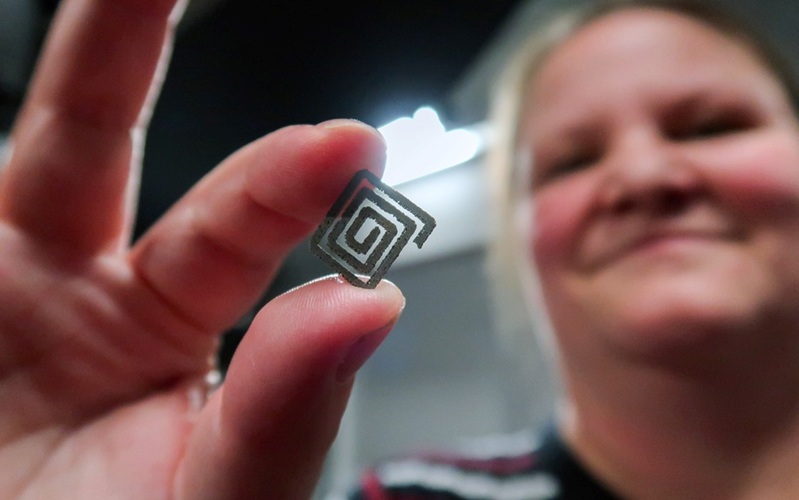
Diamond-Titanium Device Paves Way for Smart Implants that Warn of Disease Progression
Medical implants such as stents, prosthetics, and drug-release systems often rely on batteries that take up space, wear out, and eventually require replacement surgery. These limitations increase risks... Read morePatient Care
view channel
Revolutionary Automatic IV-Line Flushing Device to Enhance Infusion Care
More than 80% of in-hospital patients receive intravenous (IV) therapy. Every dose of IV medicine delivered in a small volume (<250 mL) infusion bag should be followed by subsequent flushing to ensure... Read more
VR Training Tool Combats Contamination of Portable Medical Equipment
Healthcare-associated infections (HAIs) impact one in every 31 patients, cause nearly 100,000 deaths each year, and cost USD 28.4 billion in direct medical expenses. Notably, up to 75% of these infections... Read more
Portable Biosensor Platform to Reduce Hospital-Acquired Infections
Approximately 4 million patients in the European Union acquire healthcare-associated infections (HAIs) or nosocomial infections each year, with around 37,000 deaths directly resulting from these infections,... Read moreFirst-Of-Its-Kind Portable Germicidal Light Technology Disinfects High-Touch Clinical Surfaces in Seconds
Reducing healthcare-acquired infections (HAIs) remains a pressing issue within global healthcare systems. In the United States alone, 1.7 million patients contract HAIs annually, leading to approximately... Read moreHealth IT
view channel
Printable Molecule-Selective Nanoparticles Enable Mass Production of Wearable Biosensors
The future of medicine is likely to focus on the personalization of healthcare—understanding exactly what an individual requires and delivering the appropriate combination of nutrients, metabolites, and... Read moreBusiness
view channel
Philips and Masimo Partner to Advance Patient Monitoring Measurement Technologies
Royal Philips (Amsterdam, Netherlands) and Masimo (Irvine, California, USA) have renewed their multi-year strategic collaboration, combining Philips’ expertise in patient monitoring with Masimo’s noninvasive... Read more
B. Braun Acquires Digital Microsurgery Company True Digital Surgery
The high-end microsurgery market in neurosurgery, spine, and ENT is undergoing a significant transformation. Traditional analog microscopes are giving way to digital exoscopes, which provide improved visualization,... Read more
CMEF 2025 to Promote Holistic and High-Quality Development of Medical and Health Industry
The 92nd China International Medical Equipment Fair (CMEF 2025) Autumn Exhibition is scheduled to be held from September 26 to 29 at the China Import and Export Fair Complex (Canton Fair Complex) in Guangzhou.... Read more












